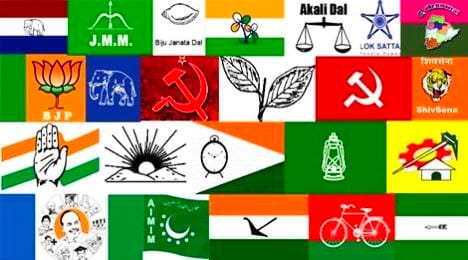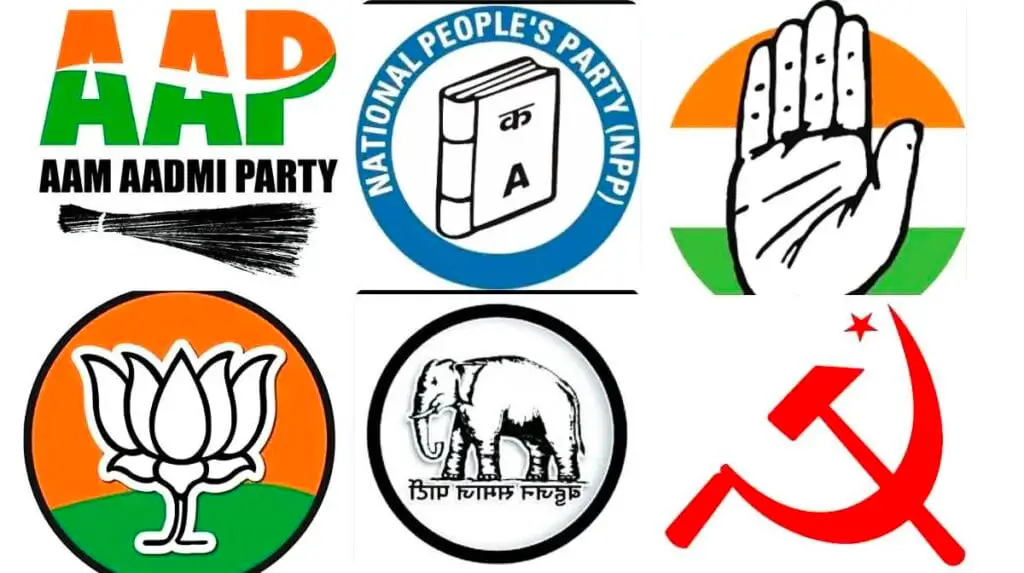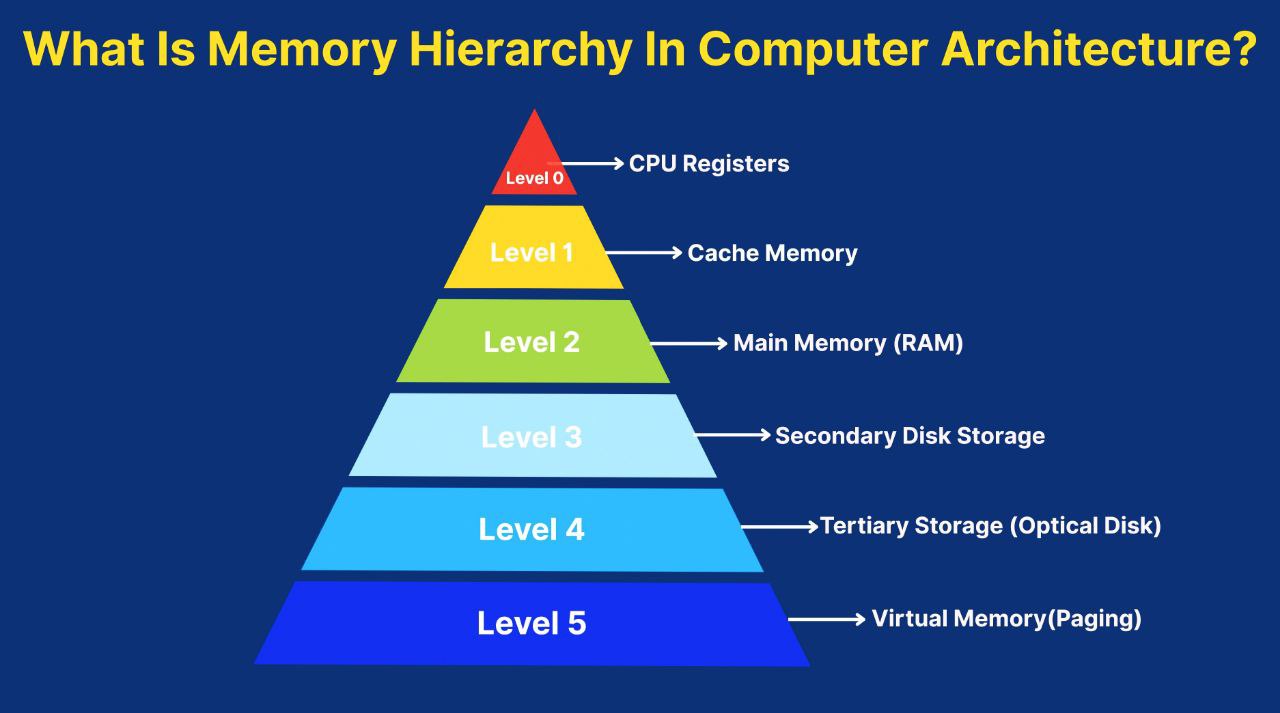Recent Trends in Indian Party System
Recent Trends in the Indian Party System
India’s political landscape has undergone significant transformations in recent decades, with various trends shaping the country’s party system. Historically a multi-party system with a dominance of the Indian National Congress, the Indian party system has evolved into a more competitive, dynamic, and diverse structure.
Here are the key recent trends in the Indian party system :

1. Dominance of the Bharatiya Janata Party (BJP):
- Since 2014, the BJP has emerged as the most dominant political party in India under the leadership of Narendra Modi. It has won consecutive general elections in 2014 and 2019 with substantial majorities, marking the end of coalition-era politics at the national level.
- The BJP has expanded its presence beyond its traditional strongholds in northern and western India into new regions like the northeast, West Bengal, and southern states, reflecting a shift in voter demographics and preferences.
2. Decline of the Congress Party:
- The Indian National Congress (INC), which had been the dominant force in Indian politics for several decades, has seen a significant decline in its influence, especially at the national level.
- Congress has faced successive defeats in general elections and lost power in many states, struggling to rebuild its organizational strength and voter base.
- Leadership challenges and internal dissent within the party have further exacerbated its decline, leading to reduced electoral success and relevance in many regions.
3. Rise of Regional Parties and Coalitions in States:
- Regional parties continue to play a critical role in Indian politics, especially at the state level. States like West Bengal (TMC), Tamil Nadu (DMK), Telangana (TRS/BRS), and Odisha (BJD) are dominated by regional parties, which often focus on local identity, language, and issues specific to their regions.
- While the BJP is dominant at the national level, regional parties have maintained their influence in various states and have managed to keep national parties at bay in some regions.
- Coalition governments remain common in states where no single party is able to secure a clear majority, showcasing the continued relevance of coalition politics at the regional level.
4. Fragmentation and Realignment of Political Parties:
- The Indian party system has witnessed increased fragmentation, with many smaller parties gaining traction and political importance in specific regions. This is evident in the splintering of regional parties (e.g., factions within the Samajwadi Party or the Janata Dal).
- There have been realignments between parties, both in terms of alliances and ideological positions. Parties that were once strong rivals have come together to form alliances to counter the BJP’s growing influence (e.g., Congress and Shiv Sena alliance in Maharashtra).
5. Personalized and Centralized Leadership:
- There has been a growing trend toward personalized leadership, where parties revolve around a single charismatic leader. For example:
- Narendra Modi is seen as the face of the BJP, with the party’s fortunes closely tied to his popularity.
- Mamata Banerjee (TMC), Naveen Patnaik (BJD), and Arvind Kejriwal (AAP) are regional leaders whose parties are closely identified with their personalities.
- This trend has led to centralized decision-making within parties, where a single leader or a small group of leaders control most political decisions.
6. Hindutva Ideology and Nationalism:
- The BJP’s ideological focus on Hindutva (Hindu nationalism) has played a central role in its rise, with the party emphasizing national identity, security, and religious issues. This shift has led to polarization in Indian politics, with clear divides between parties supporting or opposing this agenda.
- Nationalist themes such as “One Nation, One Election,” the revocation of Article 370 in Jammu & Kashmir, and issues related to CAA-NRC (Citizenship Amendment Act and National Register of Citizens) have shaped political discourse and mobilized voter bases along ideological lines.
7. Increased Role of Social Media and Digital Campaigning:
- Political campaigning in India has seen a dramatic shift with the rise of social media and digital platforms. Parties, especially the BJP, have effectively used platforms like Twitter, Facebook, and WhatsApp to reach voters, particularly younger demographics.
- Digital tools have enabled more targeted political messaging, mobilization of grassroots support, and real-time political narratives.
8. Issue-Based Politics:
- In recent years, Indian elections have increasingly focused on specific issues rather than ideological battles. Key issues like development (vikas), jobs, infrastructure, governance, corruption, and social welfare programs (e.g., Ayushman Bharat, Swachh Bharat) have taken center stage.
- Welfare schemes targeting specific communities, such as farmers, women, and low-income groups, have become crucial tools for political parties to build electoral support.
9. Rise of Aam Aadmi Party (AAP):
- The Aam Aadmi Party (AAP) has become a significant player, particularly in Delhi, where it has won consecutive state elections. Its success is largely attributed to its focus on governance issues like education, healthcare, and anti-corruption.
- AAP has expanded its political footprint outside Delhi, winning in Punjab in 2022 and aiming to grow in other states, signaling the rise of a new political force at the national level.
10. Polarization and Identity Politics:
- Indian politics has become increasingly polarized, with religious, caste, and regional identities playing a significant role in voter behavior.
- Caste-based politics, while not new to India, continues to evolve, with parties leveraging caste dynamics to mobilize support (e.g., the rise of Dalit and OBC-centric parties like the Bahujan Samaj Party, Samajwadi Party).
- Religious polarization has also become more pronounced, especially with the rise of Hindutva politics, leading to divisions in voting patterns along religious lines.
11. Election as a Presidential-Style Contest:
- General elections in India have increasingly taken on a presidential-style of contest, where voters focus on the national leader rather than local candidates or issues. For example, the 2019 general elections were largely seen as a referendum on Narendra Modi‘s leadership, with voters prioritizing his persona over individual candidates.
12. Women in Politics:
- While still underrepresented, there has been an increased focus on the role of women in Indian politics. The rise of female leaders like Mamata Banerjee (TMC), Mayawati (BSP), and other regional figures shows progress, though the representation of women in parliament and state legislatures remains an area for improvement.

Conclusion:
The Indian party system is undergoing rapid changes marked by the dominance of the BJP, the decline of Congress, the continuing influence of regional parties, and the rise of new political forces like AAP. As social media and identity politics continue to shape electoral dynamics, Indian politics remains highly competitive, diverse, and regionally fragmented, reflecting the country’s vast and complex democratic system.
Share this content:



Leave a Reply